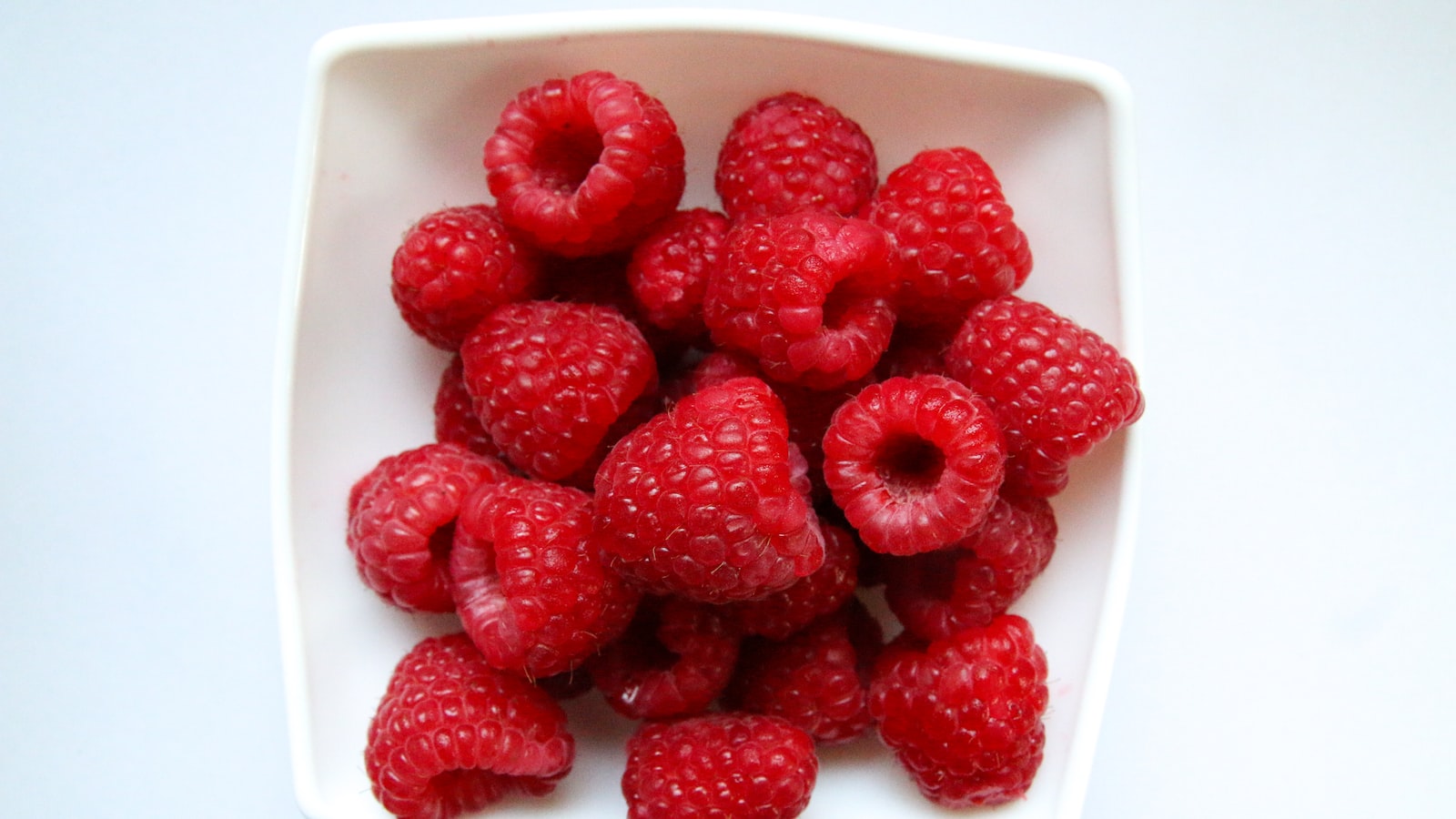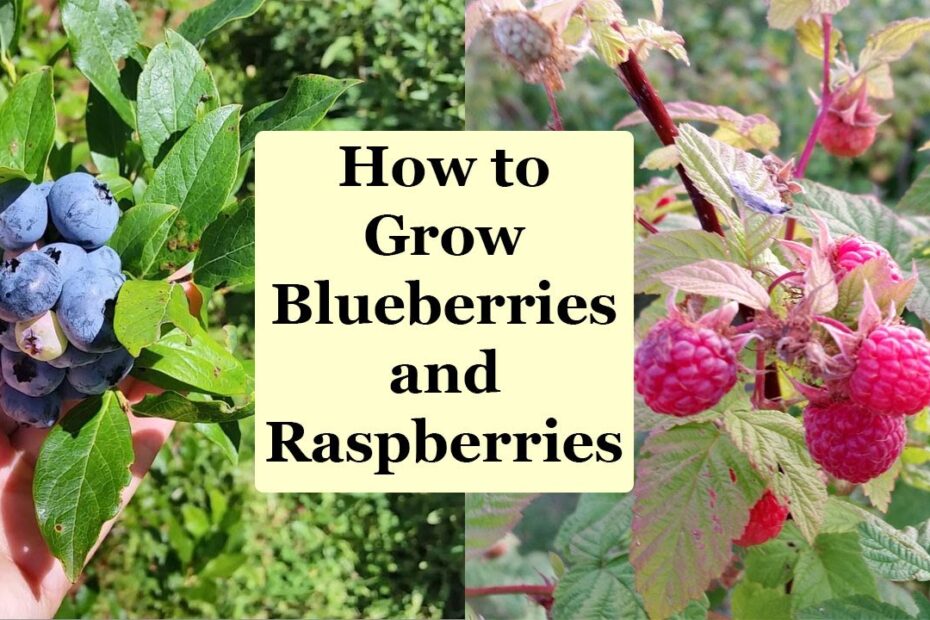Magic in the Garden: Harmonizing Raspberries and Blueberries
In the enchanting world of gardening, where the boundaries of imagination intertwine with the practicality of cultivation, a delightful question often pops up: can raspberries and blueberries coexist harmoniously within the same patch of soil? As we embark on this whimsical adventure, let us explore the ancient secrets concealed within nature’s chest, pondering the potential synergy between these two bountiful berry bushes. With an open mind and a sprig of curiosity by our side, we shall unravel the truth behind this horticultural riddle. So, prepare to enter a mesmerizing realm where raspberries dance with blueberries, painting the garden palette with a delightful array of flavors and colors.
The Ultimate Guide to Companion Planting: Can You Plant Raspberries and Blueberries Together?
Companion planting is an age-old gardening technique that involves growing different plants together in a way that benefits both their growth and productivity. When it comes to raspberries and blueberries, many gardeners wonder if these delicious berries can be planted together. The answer is yes, you can certainly plant raspberries and blueberries together in your garden! While they have slightly different needs, with a little bit of planning and care, you can create a thriving berry patch that yields an abundance of juicy fruits.
One of the key considerations when planting raspberries and blueberries together is their soil requirements. Raspberries prefer slightly acidic soil with a pH level of around 5.5 to 6.5, while blueberries thrive in more acidic soil with a pH level of 4.0 to 5.5. Therefore, it’s important to ensure that the soil is well-drained and has the right pH level to meet the needs of both plants. Adding organic matter like compost or well-rotted manure to the soil can help improve the overall fertility and drainage, providing the optimal growing conditions for both raspberries and blueberries. Additionally, using mulch around the plants can help retain moisture and suppress weeds, reducing competition and making it easier to maintain their specific soil requirements.
To make the most of your raspberry and blueberry companion planting, here are some features and tips you should consider:
| Features | Tips |
|---|---|
| Both raspberries and blueberries are rich in antioxidants, providing multiple health benefits. | Ensure proper spacing between plants to allow good air circulation and prevent the spread of any potential diseases. |
| Both berries attract pollinators such as bees, enhancing overall productivity in the garden. | Regular pruning is essential for the health and vitality of both raspberries and blueberries. Remove any dead or diseased canes to promote new growth. |
| Planting raspberries and blueberries together can create an aesthetically pleasing berry patch with vibrant colors and varied textures. | Avoid planting raspberries and blueberries near tomatoes, potatoes, or peppers, as they can be more susceptible to similar diseases. |
By following these guidelines and incorporating suitable features and tips into your gardening practice, you can successfully plant raspberries and blueberries together and enjoy the bountiful harvest of both berries. So go ahead, get your gardening gloves on, and prepare to indulge in the delightful combination of raspberry and blueberry flavors straight from your own backyard!

Exploring the Synergy: Unlocking the Potential Benefits of Planting Raspberries and Blueberries Together
Many gardening enthusiasts wonder if it’s possible to plant raspberries and blueberries together, and the answer is a resounding “Yes!” These two delicious fruits can not only be grown side by side but also thrive in each other’s presence, creating a delightful synergy that benefits both plants. Let’s delve into the exciting world of planting raspberries and blueberries together and discover the potential advantages that this clever combination can unlock.
First and foremost, planting raspberries and blueberries together can maximize the use of garden space. By combining these two fruits in one area, you can make the most of valuable real estate, ensuring a bountiful harvest from a compact planting. This beautiful partnership can also provide aesthetic dividends, as the contrasting colors of raspberries and blueberries intermingling can create a visually stunning display in your garden.
| Features | Tips |
|---|---|
| Enhanced pollination: Planting raspberries and blueberries together attracts more pollinators, leading to better fruit set for both plants. Bees and other beneficial insects are drawn to the abundant blossoms, ensuring successful fertilization. | Proper spacing: Provide adequate spacing between plants to ensure good airflow and minimize the risk of disease. Raspberries typically require more space than blueberries, so keep this in mind when planning your planting layout. |
| Extended harvest season: By combining raspberries and blueberries, you can extend your harvest season. Blueberries tend to ripen earlier, while raspberries follow suit slightly later. This succession ensures a longer availability of fresh and juicy fruits. | Soil requirements: Both raspberries and blueberries prefer acidic soil with a pH between 4 and 6. Amend the soil accordingly with organic matter, such as peat moss or compost, to create an optimal growing environment for these delightful berries. |
| Complementary growth habits: Raspberries and blueberries have different growth habits, which can work to their advantage when planted together. Raspberries tend to grow upright and benefit from trellising, while blueberries have a more bushy habit. This variance prevents overcrowding and allows each plant to flourish. | Pruning: Proper pruning is essential for both raspberries and blueberries. Familiarize yourself with the specific pruning needs of each plant and invest time in maintaining their form and removing dead or diseased wood to promote healthy growth and abundant fruiting. |

Creating an Optimal Growing Environment: Tips for Successfully Cultivating Raspberries and Blueberries Side by Side
When it comes to gardening, there is nothing more delightful than the sight of vibrant raspberries and blueberries flourishing side by side in your own backyard. Not only do these berries offer a delectable treat when fully ripe, but they also add a burst of color to your landscape. You might be wondering, can you plant raspberries and blueberries together? The answer is a resounding yes! However, there are a few crucial factors to keep in mind for successfully cultivating these fruit-bearing plants side by side.
To ensure optimal growth and bountiful harvests of raspberries and blueberries simultaneously, here are some expert tips:
Row Spacing
- Provide enough space between your raspberry and blueberry rows. Aim for a minimum of 5 feet to allow proper airflow and sunlight exposure.
- In smaller gardens, consider planting raspberries on trellises to optimize space and avoid overcrowding.
Soil Requirements
- Both raspberries and blueberries thrive in well-drained soil with a slightly acidic pH level ranging between 5.5 to 6.5.
- Enhance the soil fertility by adding organic matter like compost or aged manure before planting.
Pollination
- While raspberries are self-pollinating, blueberries greatly benefit from cross-pollination for higher yields.
- Plant multiple varieties of blueberry bushes to encourage pollinators and improve fruit set.
Pruning and Maintenance
- Regularly prune raspberry canes to promote healthy growth and remove any diseased or damaged stems.
- For blueberry shrubs, selectively prune branches that are over four years old to stimulate new growth.
| Feature/Tips | Raspberries | Blueberries |
|---|---|---|
| Preferred Soil pH | 5.5 – 6.5 | 5.5 – 6.5 |
| Planting Spacing | 2 – 3 feet | 4 – 6 feet |
| Pruning Time | Winter or early spring | Winter or early spring |
By following these tips, you can create an ideal growing environment for raspberries and blueberries, maximizing their productivity and ensuring a fruitful harvest season. Unleash your inner gardener and enjoy the delightful rewards of cultivating these luscious berries side by side in your very own backyard oasis!

Strategic Considerations: Maximizing Yield and Managing Potential Challenges in Growing Raspberries and Blueberries Together
Raspberries and blueberries are two popular types of berries that can be grown together to maximize yield and effectively manage potential challenges. By strategically considering various factors, you can create an ideal environment for these berries to thrive and enhance your overall harvest.
One important consideration is the compatibility of the two berry plants. While raspberries and blueberries have different growing requirements, they can be successfully planted together with careful planning. Both berries prefer acidic soil with a pH level between 4.5 to 5.5. Additionally, raspberry plants tend to be more vigorous and can provide some shade for the blueberry plants since they grow taller. This natural shading creates a microclimate that helps protect the blueberries from excessive heat and sun exposure.
| Features | Tips |
|---|---|
| 1. Complementary growing habits | 1. Adequate spacing between plants ensures better air circulation |
| 2. Extended harvest season | 2. Mulch the soil to retain moisture and suppress weed growth |
| 3. Pollination benefits for both fruits | 3. Prune raspberry canes regularly to maintain plant health and improve airflow |
Frequently Asked Questions
Q: Can you plant raspberries and blueberries together to create a berry bonanza in your garden?
A: Absolutely! You can create a harmonious berry symphony by planting raspberries and blueberries together. These delightful fruit companions coexist peacefully in your garden, offering a magnificent tapestry of colors and flavors.
Q: Do raspberries and blueberries make good gardening partners?
A: Indeed, they do! Raspberries and blueberries are not just delicious on your breakfast table; they also make wonderful garden companions. Raspberries offer a beautiful vertical element with their slender canes, while blueberries bring a touch of elegance with their lush foliage. Together, they form a dynamic duo that adds visual interest to your garden landscape.
Q: Are there any special considerations for planting raspberries and blueberries together?
A: While raspberries and blueberries can happily share the same space, there are a few things to keep in mind. Firstly, raspberries prefer slightly acidic soil, while blueberries thrive in highly acidic soil. To strike a balance, aim for a pH level that suits both plants, around 5.5-6.5. Additionally, providing adequate space and trellising support for raspberries will ensure they grow happily alongside blueberries. So, go ahead and embark on this fruitful journey of planting raspberries and blueberries together – your taste buds and garden will thank you! As we reach the end of our fruitful exploration into the realm of companion planting, we have uncovered a delightful secret hidden amidst the symphony of colors and flavors that nature offers us. So, can you plant raspberries and blueberries together? Absolutely! In a dazzling display of harmony, these two berry-bearing beauties can share the stage, enhancing each other’s growth and providing a bountiful feast for your senses.
As we bid adieu to this article, we urge you to venture forth into the realms of your garden and embrace the extraordinary possibilities that lie within. Picture it: a picturesque scene, vibrant raspberry bushes mingling with illustrious blueberry shrubs, their branches intertwining in a graceful dance, and their roots softly whispering shared secrets beneath the fertile earth.
Imagine the symphony of color, as the blushing hues of raspberries commingle with the deep blues of their neighboring counterpart. Picture the symphony of flavors, as the tartness of raspberries finds balance in the sweetness of blueberries, tantalizing your taste buds with their harmonious interplay.
In this garden of earthly delights, raspberries and blueberries find solace in one another’s company, benefiting from the unique synergy that nature so generously bestows. As raspberries release a gentle stream of aromatic compounds into their surroundings, they provide a protective shield for their blueberry friends, warding off marauding pests and allowing them to thrive side by side.
And so, dear reader, we leave you with this extraordinary discovery in the world of companion planting. May you embark on your own journey of gardening ingenuity, exploring the myriad possibilities that await your green thumb. Whether you choose to plant raspberries and blueberries together or unravel the secrets of other harmonious duos, nature’s canvas is vast and ever-evolving.
As you venture forth, remember the lessons that raspberries and blueberries teach us: that we are all interconnected in this intricate tapestry of life, that together we can blossom and bear fruit in ways unimaginable when we stand alone. Let us embrace the magic that lies within our gardens, as we sow seeds of unity, creativity, and an unwavering love for the earth’s treasures.
Farewell, fellow gardener, may your gardens bloom with the vibrancy of a thousand sunsets, and your heart be filled with the wonder of nature’s endless possibilities.
- When to Put Weed and Feed on Lawn in Michigan - October 16, 2023
- When to Fertilize Potatoes Plants - October 16, 2023
- Can You Plant Clover in the Spring - October 16, 2023
Contents
- 1 The Ultimate Guide to Companion Planting: Can You Plant Raspberries and Blueberries Together?
- 2 Exploring the Synergy: Unlocking the Potential Benefits of Planting Raspberries and Blueberries Together
- 3 Creating an Optimal Growing Environment: Tips for Successfully Cultivating Raspberries and Blueberries Side by Side
- 4 Strategic Considerations: Maximizing Yield and Managing Potential Challenges in Growing Raspberries and Blueberries Together
- 5 Frequently Asked Questions

